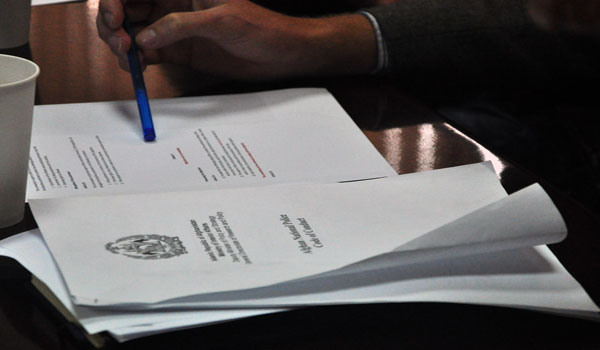Disciplinary action throughout the organization refers to any reaction to organizational poor behavior or law violations.
A performance improvement policy establishes and systematizes policies for dealing with situations that breach company rules.
Social democratic punishment, education and training and productivity enhancement programs (PIP), and modification or termination are indeed the three primary forms of corrective action initiatives.
Despite the fact that it is an awkward topic, discipline is always important in organizations. A disciplinary actions policy is required for businesses. Before you begin enforcing this form of rule on your own, it is essential to know what a corrective action policy is, why you may have to have one, and even how to create your personal style.
A corrective action policy establishes and standardizes policies for dealing with situations that violate company rules.
A well-written corrective action procedure plainly says the security operations as well as the penalties for breaking those policies. Any disciplinary action framework should include six characteristics mentioned below:
Policy interactive map: The section describes the procedures that will also be followed in the event of employer wrongdoing or fails to uphold them.
At-will job comment: This section of the policy specifies that all workers work at will and therefore can be fired at any point and time.
The types of supervision that can be used and the measures that’ll be taken: In this paragraph, the organization designs each action that will also be taken to resolve an issue as well as the type (or types) of regulation that will also be implemented.
Specifically, indicate what each step would entail and the motives for taking the problem to the next stage. This paragraph really should state clearly what the expectations are for management, such as recording each chapter concludes the study and staff are working completely updated.
Description of the punitive procedure steps as well as which violations stop and at that stage: Include clear explanations of each procedure or what the individual should do, and also any infringements that may occur outside of the measures being followed in sequential sequence.
For example, forgetfulness issues may end at stage one, with the director issuing a formal warning to the worker, whereas significant violations may begin at stage three, which may result in termination.
An example of an individual employee appealing a decision: Your policies should have a statement specifying that any person who feels they have been treated unfairly or improperly may challenge objectives served by the affected authority, such as human resources. Management plan for workers to take if they disagree with a policy.
Proclamations that provide legal security to the organization: You must also provide legal safeguards for the corporation because there are many possible legal consequences if your compliance policy is not carefully designed.
Employee discipline and transfer are governed by the increase The sustainability and Conservation Tillage Act (WARN), which really only refers to employers of 100 or even more workers, and the Works Progress Administration, which regulates unionized employees.
Criminal prosecution in the workplace refers to any reaction to organizational unprofessional conduct or rule violations. Your company guidebook should detail all corporate guidelines.
Based on the seriousness of the infringement, disciplinary measures will vary from an oral or nonverbal warning to removal or even expulsion.
An organizational discipline document offers workers specific expectations for expected behavior as well as the repercussions for breaking the rules. Many actions are punishable by punitive proceedings.
That’s why you must explain all objectionable conduct in the employment agreement. This helps to prevent any misunderstanding and potential lawsuits by the individual who claims their conduct was not specifically forbidden. Businesses can choose from three disciplinary practices: constructive discipline, retraining, and improvement plans (PIP), among others.
The most common style of fastening is radical discipline. If an organization wishes to remedy the issue, the seriousness of the continual improvement is increased.
It is a common solution because it protects employees from workplace court proceedings. This strategy, however, is not appropriate for every person. Then just the frequency of subsequent criminal sanctions, consider including based on theoretical or drug rehabilitation elements to change the situation.
When a worker first violates a law, a firm and explicit specific procedure should really be provided. Illustrate why the action was incorrect and share the hope that it would not happen again.
A documented censure or notification provides more details. It explains the problem, how the individual is supposed to adjust their actions to address the problem, and the repercussions if they really do not.
The notice should be approved by the employee’s boss, an eyewitness, and held in the individual employee register. Before moving to the next stage of the judicial process, you can take various infringement notices.
This notification should list all of the occasions the individual was alerted, as well as any disciplinary action taken, or not taken, to change the worker’s conduct. Unless there is no change, it really should be stated unequivocally that dismissal would occur.
The last move before discharge is administrative dismissal or suspension. It gives an employee one last opportunity to change their conduct. At this stage, you can opt to enforce cheque or achievable targets, decrease the annual performance, or introduce additional assistance.
When all other symptoms resolve, this move is taken. You have such a face-to-face discussion with the team and go over all the required paperwork of the situation, such as all notifications, instructional records, and notes, and clarify that the problem has not been resolved and that the worker is now being dismissed as a result.
Related: What is Fiscal Policy?


